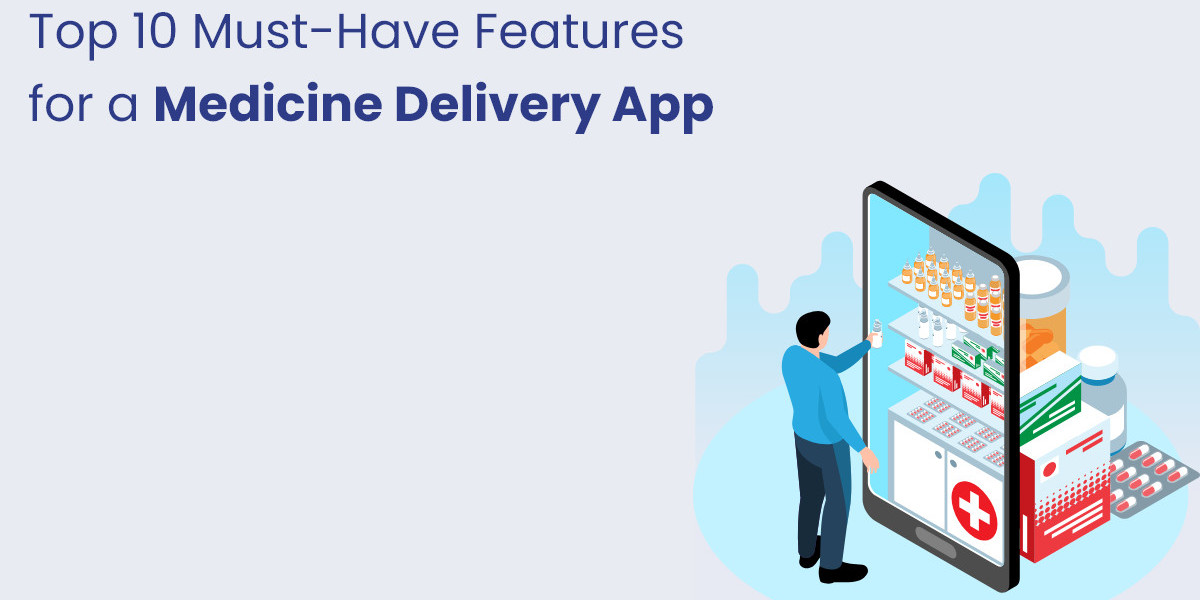In the era of digital healthcare, medicine delivery apps have emerged as indispensable tools for patients seeking convenient and accessible ways to obtain their prescription medications. These apps offer a range of features designed to streamline the medication ordering and delivery process, ensuring a seamless experience for users. To create a successful medicine delivery app that meets the needs of patients and pharmacies alike, it's essential to incorporate certain must-have features. Let's explore the top 10 features that every medicine delivery app should include.
1. User Authentication and Profile Creation
- Ensure secure user authentication methods, such as email verification or two-factor authentication, to protect user accounts.
- Allow users to create profiles where they can store personal information, medication history, and delivery preferences for a personalized experience.
2. Medication Search and Catalogue
- Provide a comprehensive catalogue of medications, including prescription and over-the-counter drugs, categorized by type, brand, and dosage.
- Incorporate advanced search functionalities, such as filters and sorting options, to help users quickly find the medications they need.
3. Prescription Upload and Verification
- Allow users to upload prescriptions directly from their device's camera or gallery.
- Implement a verification process to ensure the authenticity of prescriptions and compliance with healthcare regulations.
4. Dosage Reminders and Medication Alerts
- Enable users to set dosage reminders and medication alerts to ensure they never miss a dose.
- Send push notifications or SMS reminders at scheduled times to prompt users to take their medication on time.
5. Secure Payment Gateway
- Integrate a secure payment gateway that supports multiple payment methods, such as credit/debit cards, mobile wallets, and net banking.
- Encrypt all payment transactions to protect sensitive financial information and prevent unauthorized access.
6. Delivery Tracking and Notifications
- Provide real-time delivery tracking functionality that allows users to monitor the status of their orders from placement to delivery.
- Send timely notifications to users, updating them on the progress of their orders and estimated delivery times.
7. Pharmacy Locator and Selection
- Offer users the option to choose their preferred pharmacy for medication pickup or delivery.
- Integrate a pharmacy locator feature that displays nearby pharmacies based on the user's location and allows them to select the most convenient option.
8. Customer Support and Feedback
- Provide multiple channels for customer support, including in-app chat, email, and phone support, to address any queries or concerns users may have.
- Allow users to provide feedback and ratings for pharmacies and delivery services, facilitating continuous improvement and quality assurance.
9. Medication History and Refill Requests
- Maintain a comprehensive medication history for each user, including past orders, dosage information, and refill dates.
- Enable users to request medication refills directly from the app, streamlining the process and ensuring timely medication replenishment.
10. Accessibility Features
- Ensure that the app is accessible to users with disabilities by incorporating features such as text-to-speech functionality, adjustable font sizes, and high contrast modes.
- Comply with accessibility standards and guidelines to make the app inclusive and user-friendly for all individuals.
In conclusion, the success of a medicine delivery app hinges on its ability to provide a seamless and user-friendly experience for patients while meeting the operational needs of pharmacies. By incorporating these top 10 must-have features into the app's design and functionality, developers can create a robust and reliable platform that meets the needs of users and delivers value to pharmacies, healthcare providers, and stakeholders in the healthcare ecosystem.














